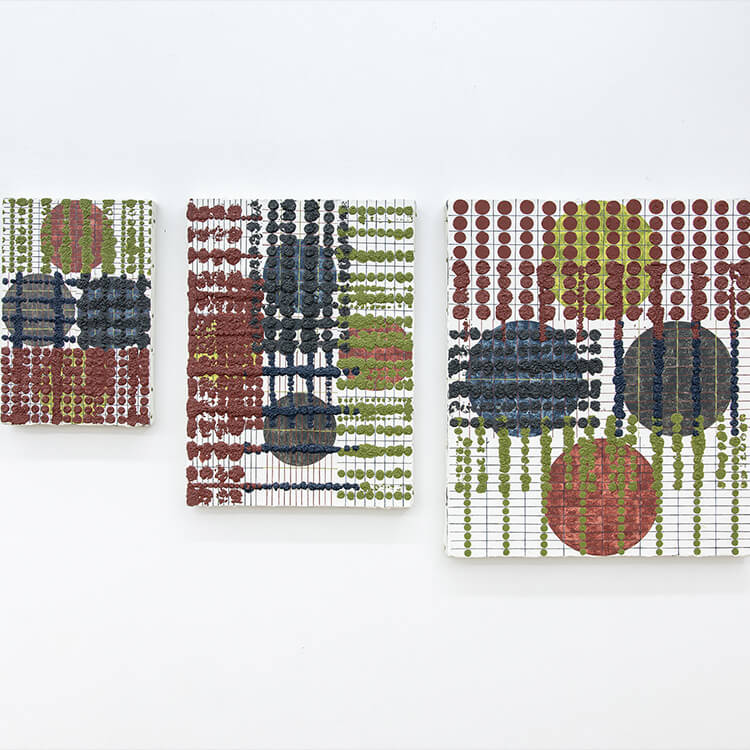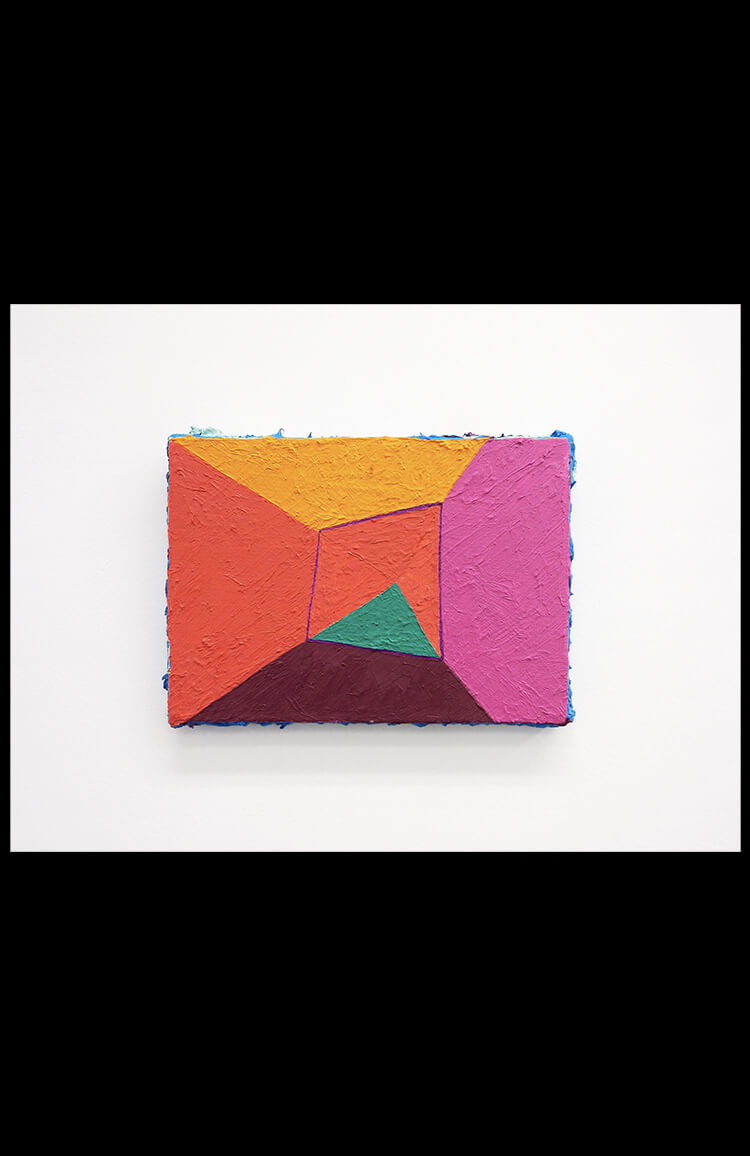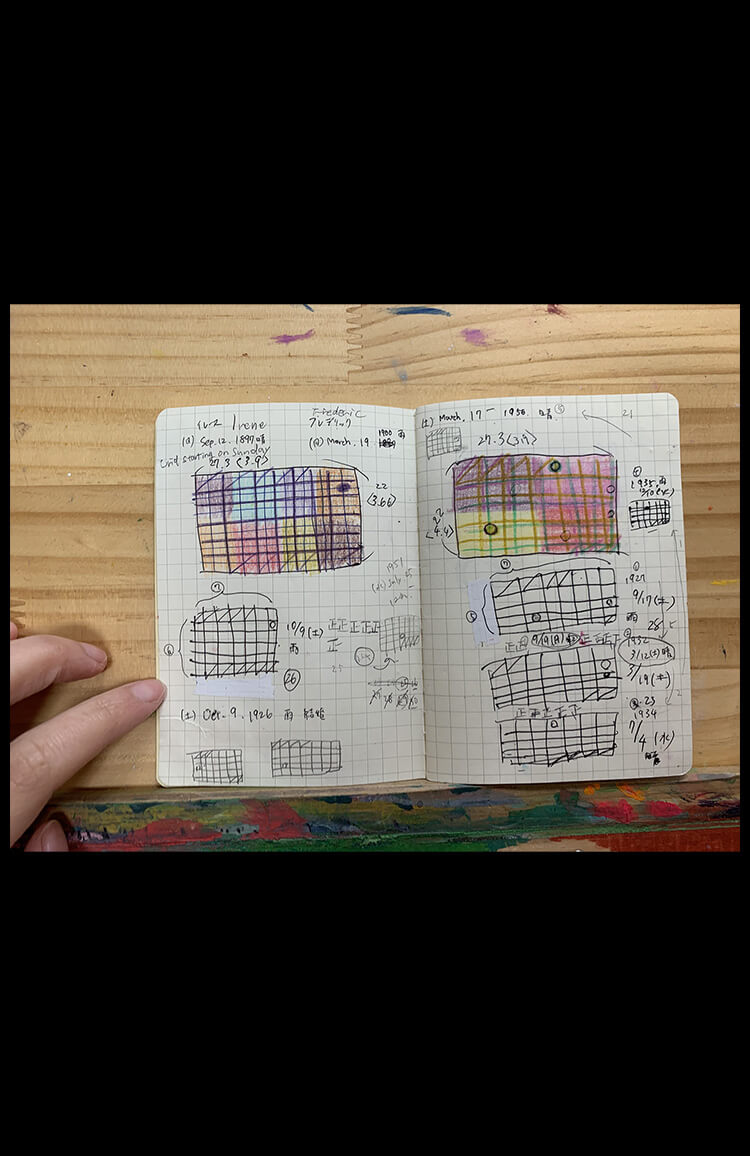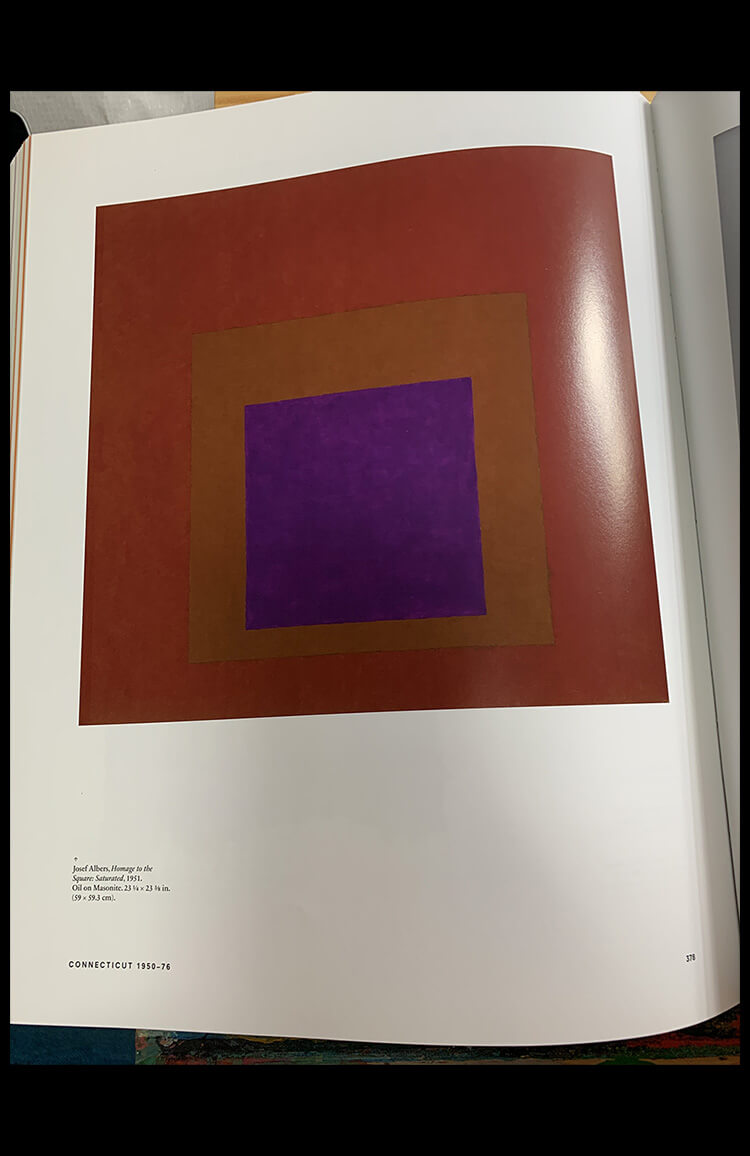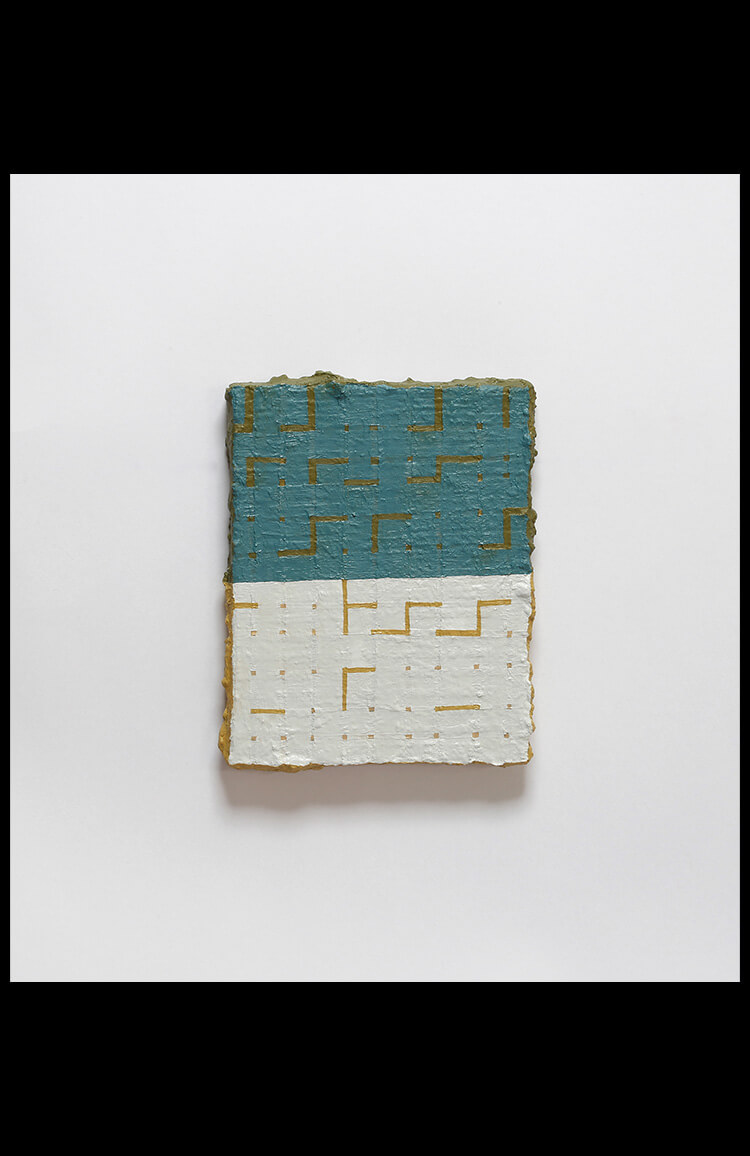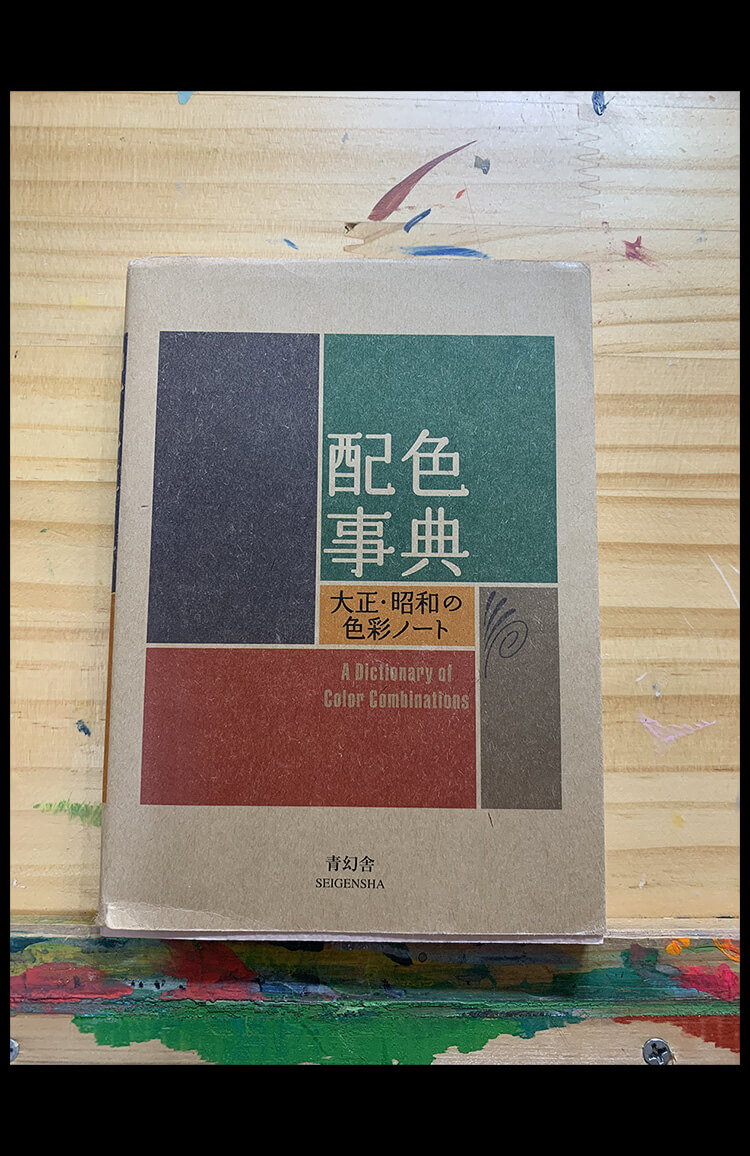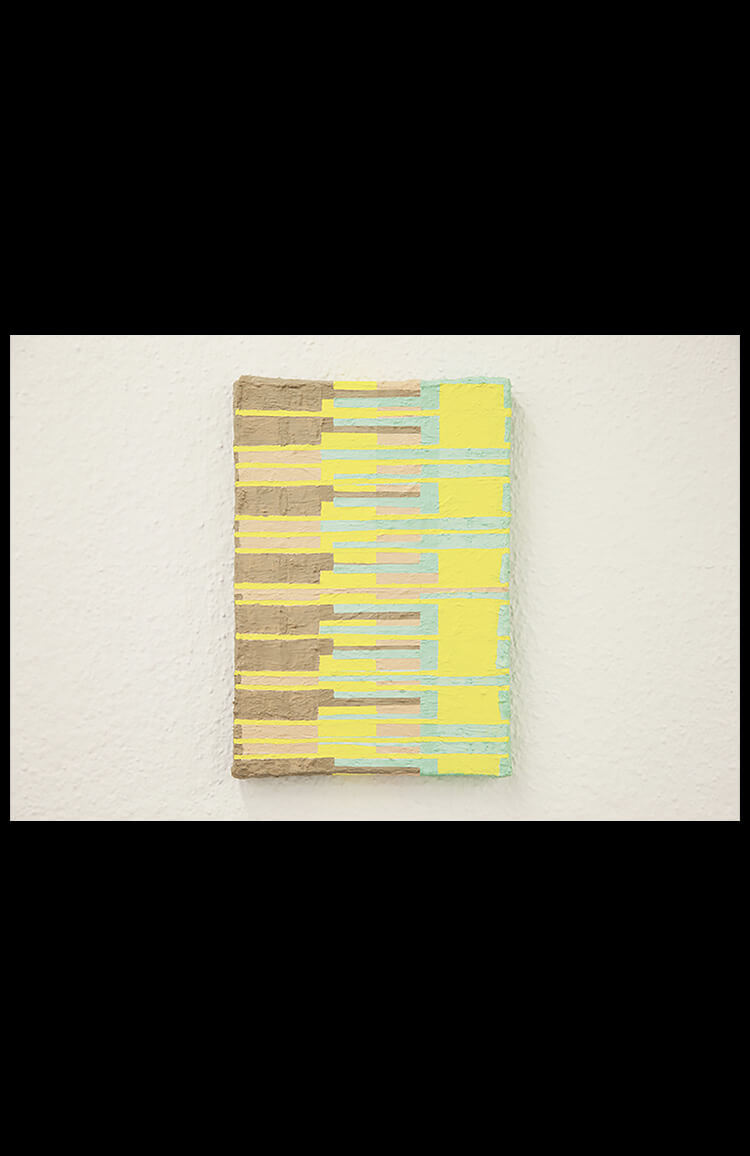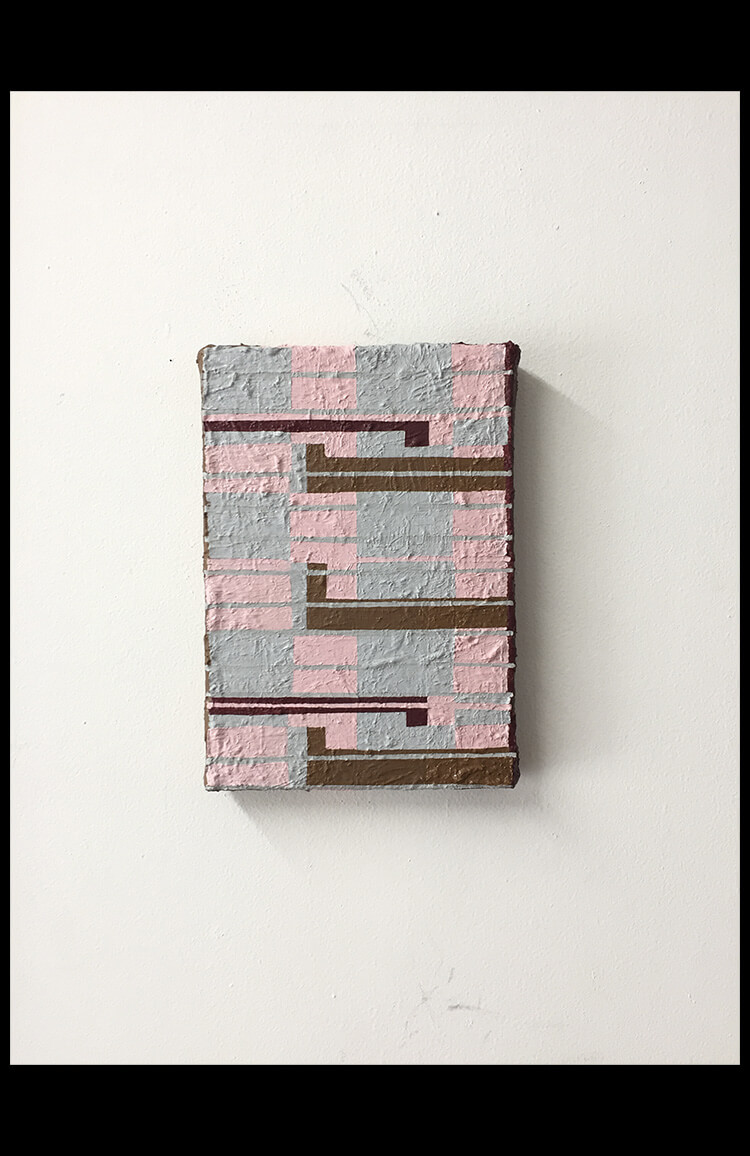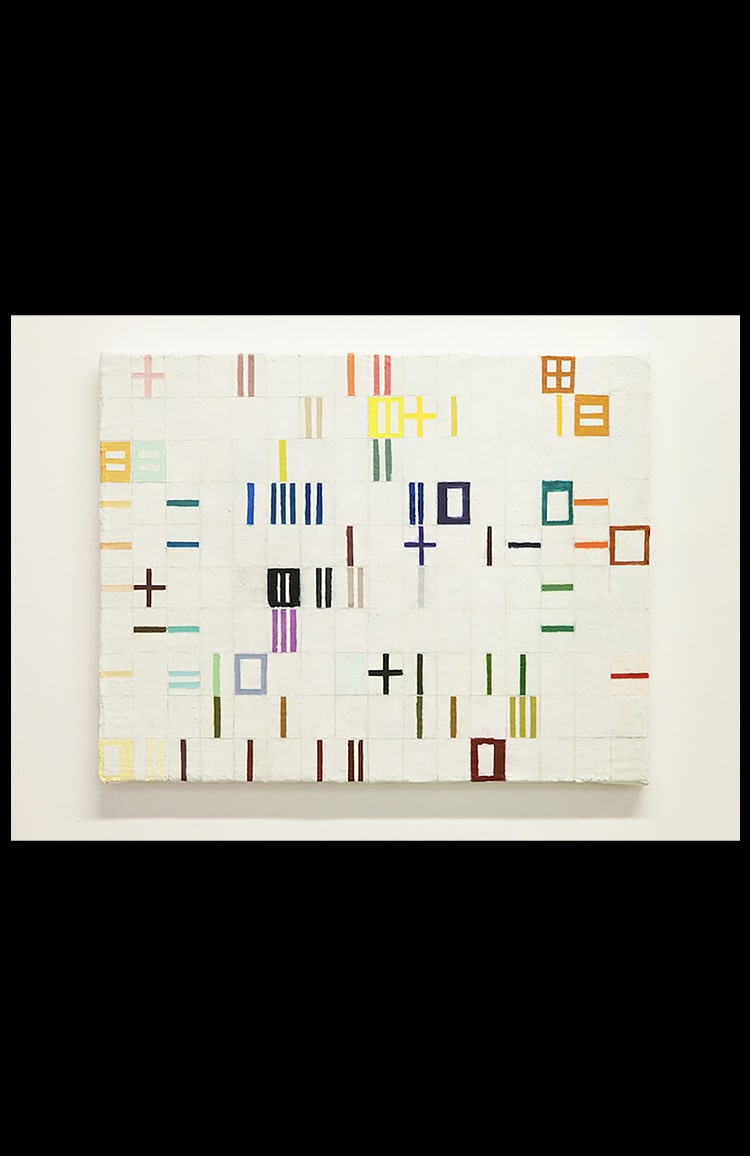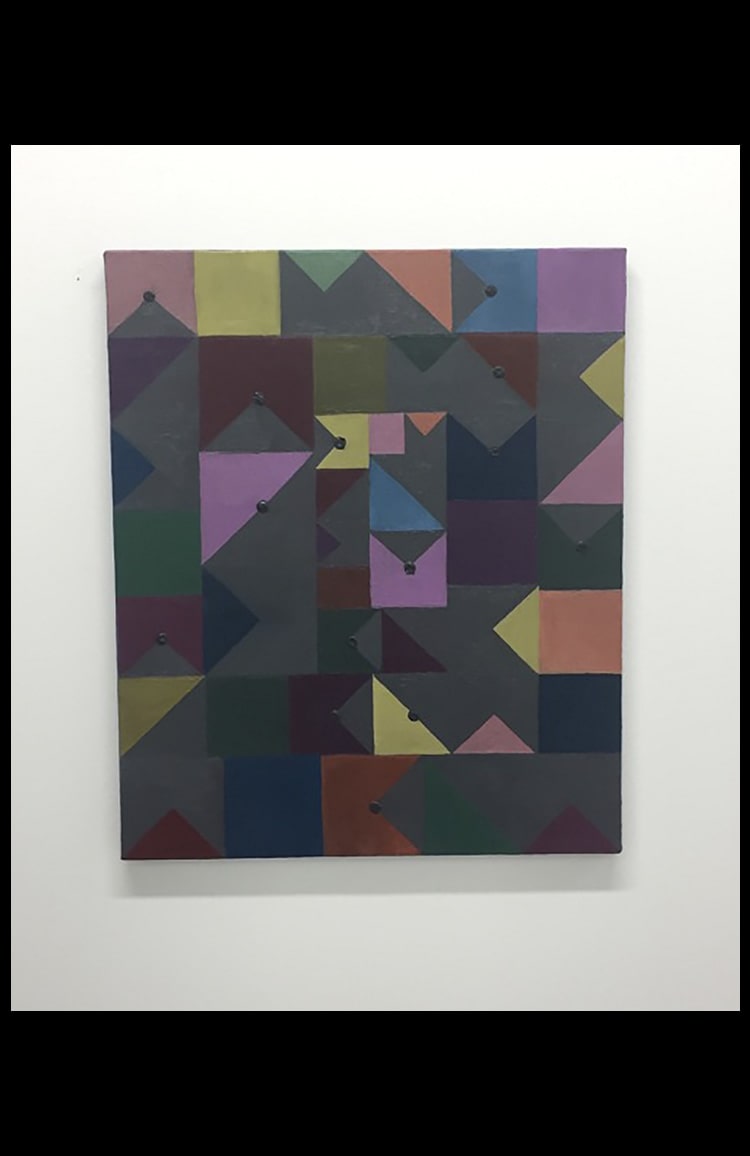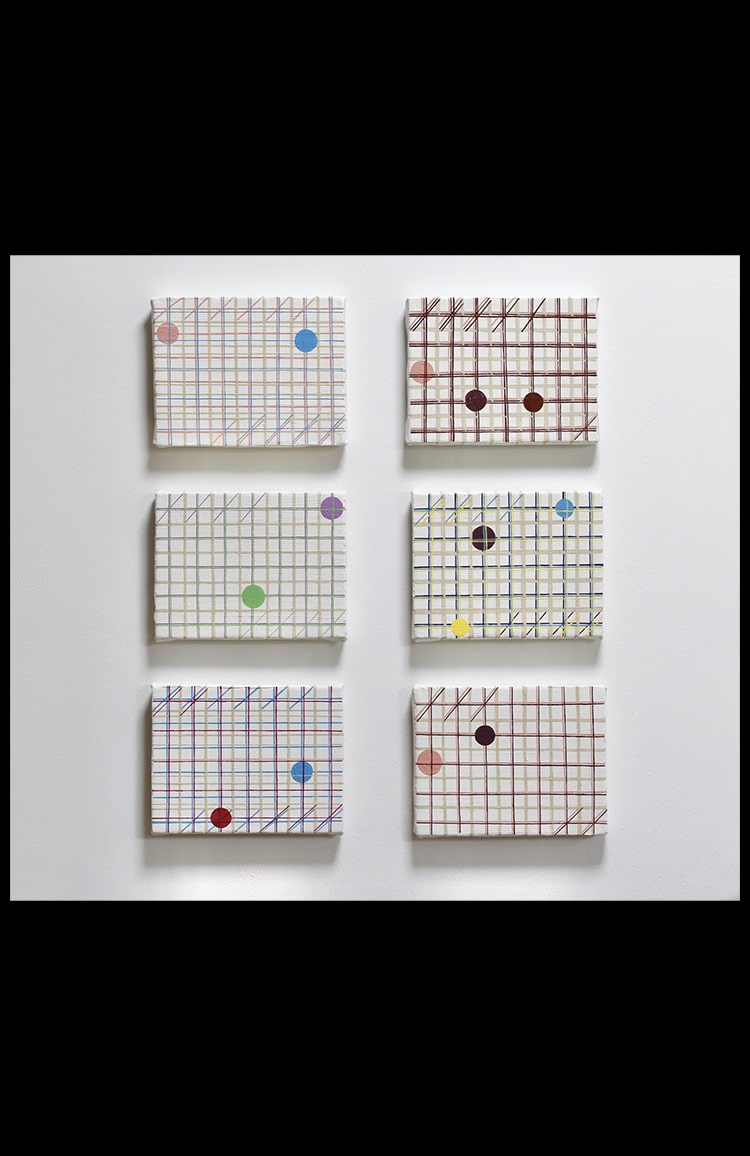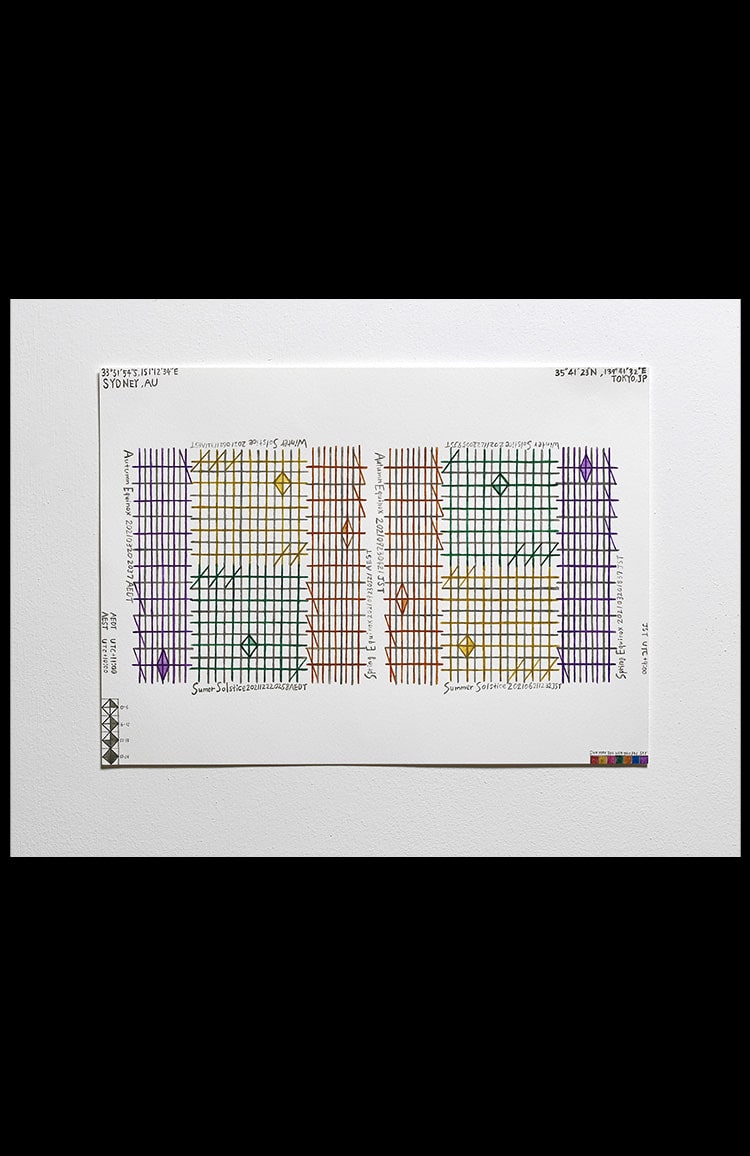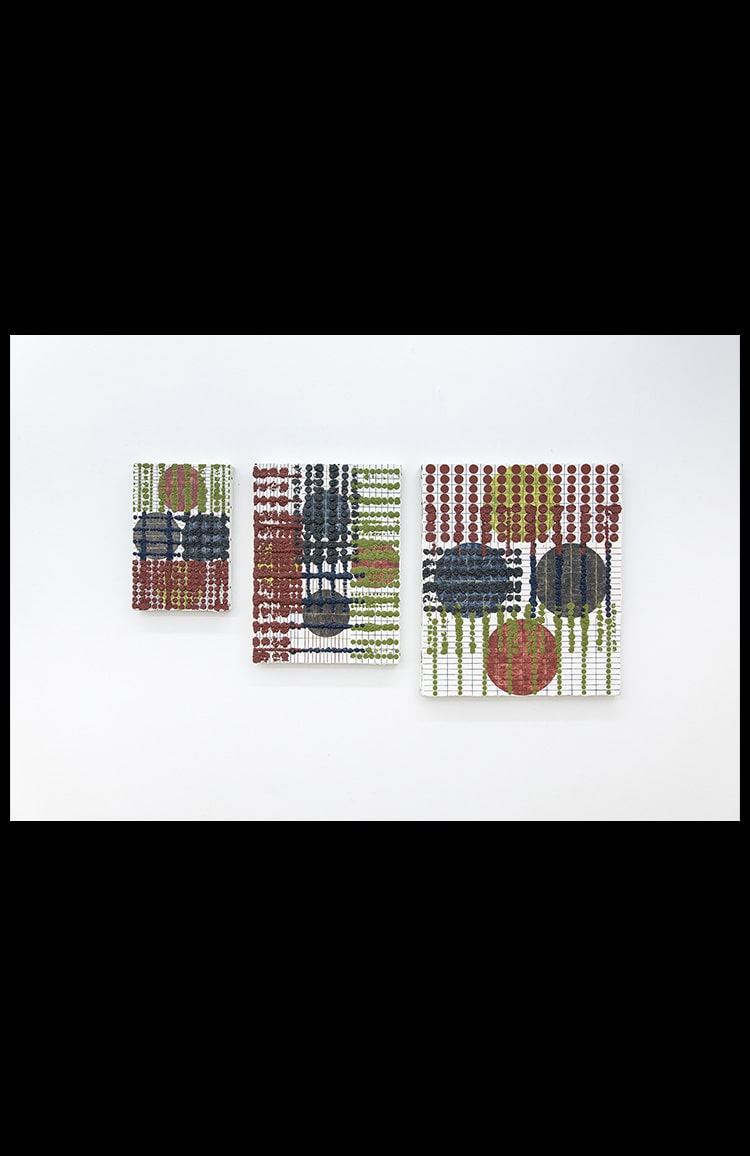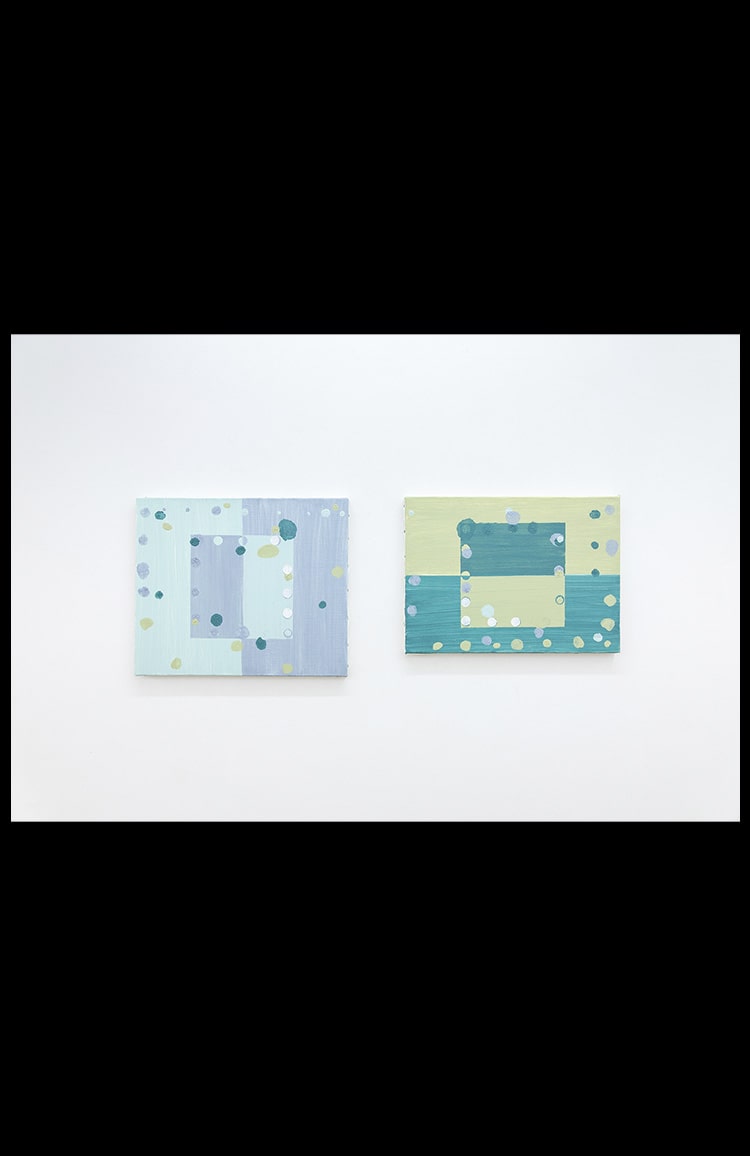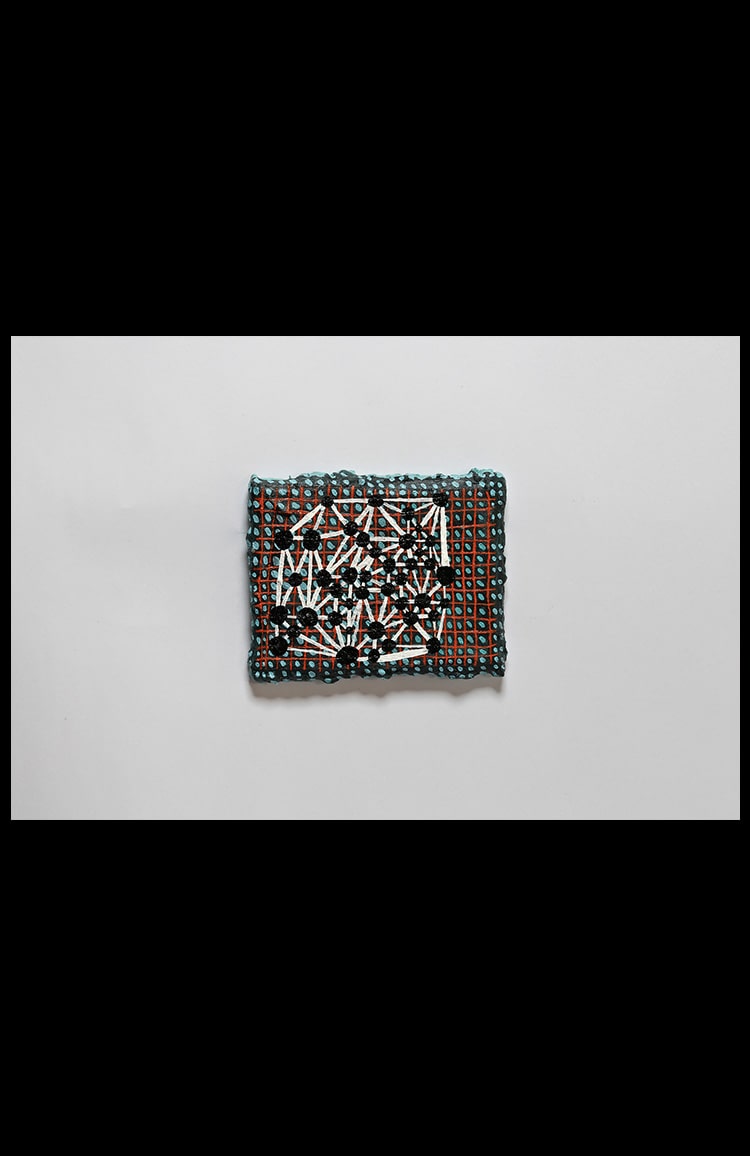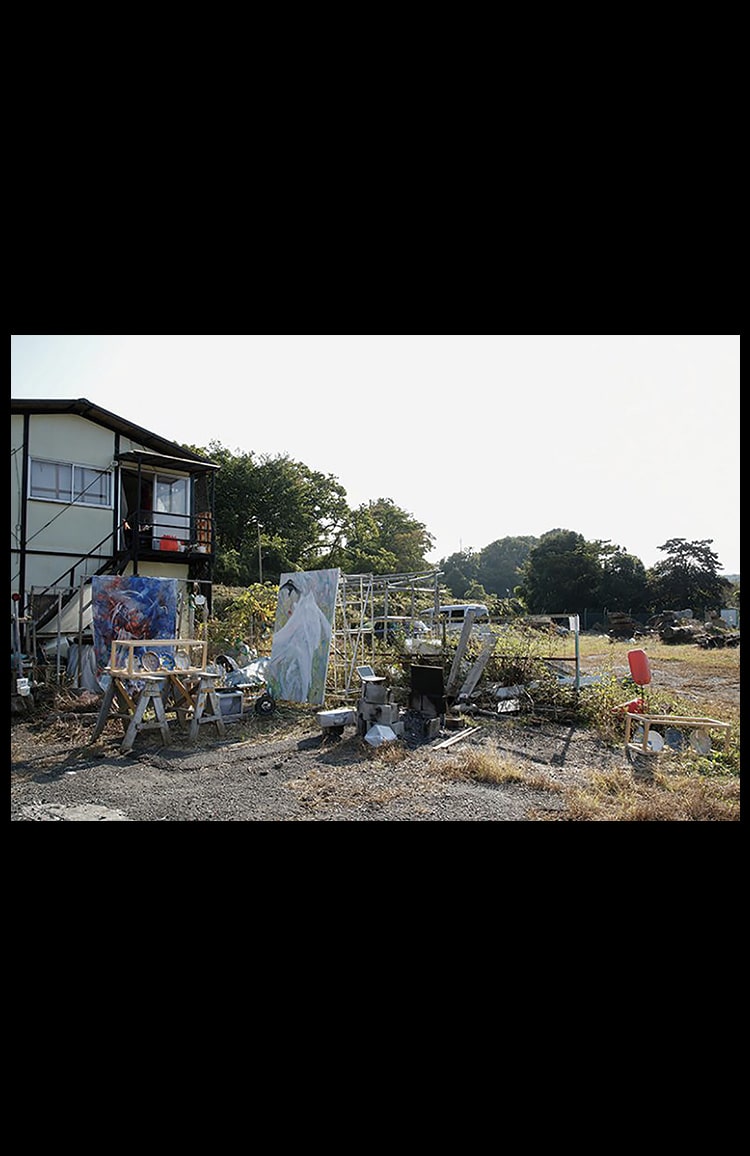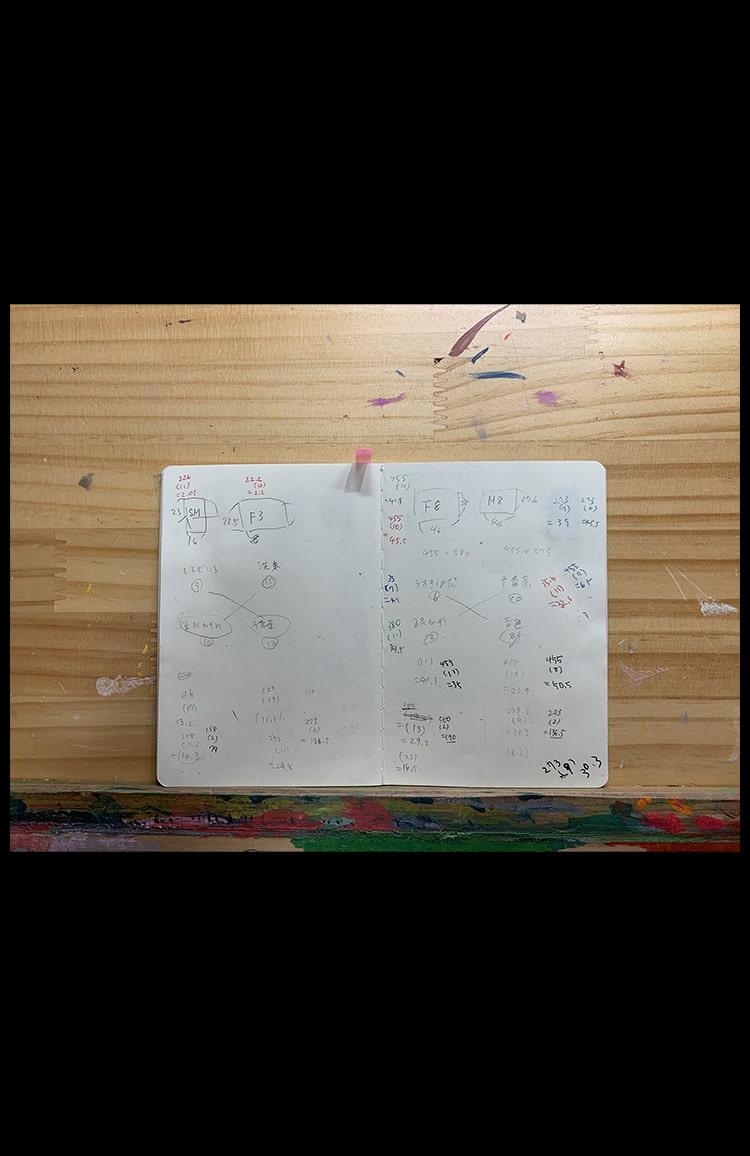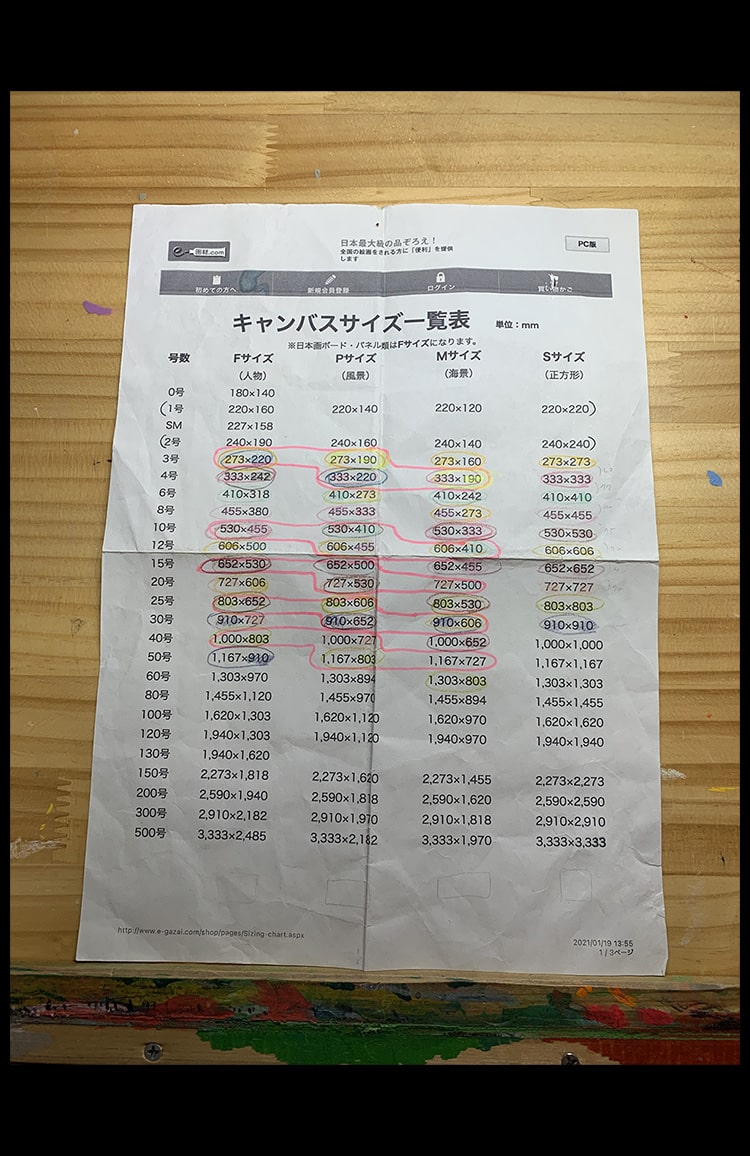IL__The works you showed in the two-person exhibition, ‘Emotional Frequencies’, with Francesca Blomfield are a different series.
MK__I got to know Francesca's work at im labor last year and was shocked. It was so amazing that I was shaking. So, I was so happy when I heard that this two-person exhibition had been confirmed. Francesca's work has a strange way of connecting the papers, and when it's hanging on the wall, it is emphasised even more. My most recent work is a series of two canvases of different sizes – I put paint on their surfaces and let them collide. I decided to exhibit the series because I thought they would somehow show similarities to Francesca's works.
By the way, the size of the canvas I used is in the title of this series.
IL__How do you decide how many times to collide the canvases?
MK__To be honest, I'm always thinking about when to stop. For the collision series, I put paint on the surfaces of the two paintings and tried to bring them together, surface to surface. In a series, I paint by rotating the axis of the canvas where the surfaces meet. I place the paint at the point where the vertical and horizontal tacks of the canvas intersect, and when I can't, the painting is done. It is interesting to see how the dots on the two canvases can be placed in unexpected places because the surfaces are aligned while rotating the axis.
IL__Is there any success or failure in the finished work after such a process?
MK__Yes, there is. It's only when I finish it that I realise how it looks. That's why I work on several paintings at the same time, and when I finish them, I decide whether I can show them or not. There are times when I don't think I can do anymore with a piece.
But to tell the truth, I don't want to set a standard for success or failure. In the book 'Calculating Life’, the writer, Masao Morita, says that "Calculating means operating according to predetermined rules. Because you can't precisely write down the quantities that are ambiguously mixed up in your head, you have to check them by laying out the clay outside your head. They are back to back, but not always exactly on top of each other, and there are often discrepancies." I thought that what he was saying was similar to the relationship between me and my work. It's essential to enjoy the uncertainty of what you've set out to do and give it a try at first, but usually, in the middle of it all, there will be a point where you think, "That's not right." It could be a simple mistake in the order, that the paint is not applied properly, the colour scheme is different from what I expected or an issue with the balance of the colour areas. If there is no mistake in the process but I don't like it, I leave it for a while. And then, if I still don't like it, I destroy it and use it as a foundation for a new painting.
IL__Is the orientation of each painting decided from the beginning?
MK__I decide from the beginning whether each painting will be portrait or landscape, but I look at them for about a week after they’re finished and then decide which side is the top or bottom. And then I put my signature in that orientation, though it doesn't really matter, to be honest. *Laughs*
At the latest exhibition at XYZ Collective, I kept thinking my work might be better if it were the other way round and would hang my paintings up again during the exhibition period. Also, I sometimes ask people in my studio, such as my husband, Masaya Chiba, questions like, "Which way do you think this is: up or down? I think it's this way, but I don't know." And if they say, "I think it's the side,” then I hang the painting that way and look at it for a couple of days.
IL__I first came to know your work through a small oil painting called ‘Prime spiral’, which is lines connecting dots painted in grids. It's one of my personal favourites. If you don't mind me asking, can you tell us about this work, too?
MK__This work was exhibited at the Paris Internationale in 2018 or 2019. It's a reference to the Ulam Spiral. If you follow prime numbers from a certain starting point, you get a spiral shape. It's really beautiful.
I simply love prime numbers; you can't see the whole picture, but there is a hint, and if you follow it, you can solve it, but you can't. With some numbers, you don't know whether they are eternal or infinite.
When I overthink what kind of formulas and grids I'm going to use in my next work, I get a compulsion that makes me want to convert everything I see. *Laughs* This could be to prime numbers, cryptography or the binary system (even though the world is moving towards the decimal system now)... But using things like this helps me face my paintings with a strong feeling.
IL__Face your paintings with a strong feeling...
Was there an impetus for this kind of immediacy or a method of making that uses existing rules and formats?
MK__Well, one of the reasons for this was the pain of not being able to see the end. I don't know how to put it, but I felt like I was losing myself in the painting. Because I'm not a good painter, I couldn't decide what I wanted to paint or what I wanted to finish.
When you're a student, you have the luxury of time to be undecided, and you can keep facing the same canvas forever. But when you go out into the world, it's hard to face a piece that you aren't sure when to finish. Eventually, there are paintings that take three years or so to complete. So, that's when I thought I wanted to have a definite end.
IL__What kind of work were you making when you were a student?
MK__At that time, I would make a kind of pattern from my drawings, and then I would paint it and break it to fit in the canvas.

